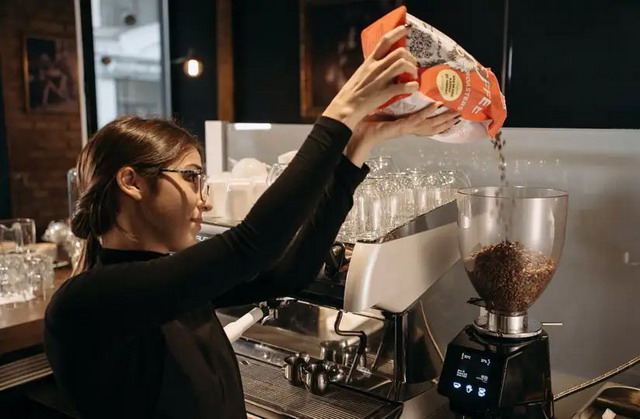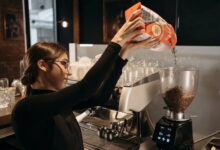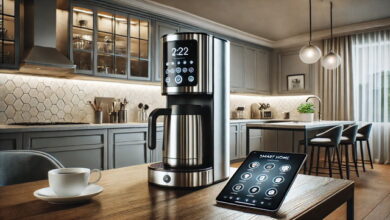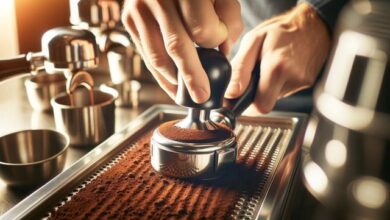Six Reasons Why Coffee From A Coffee Shop Tastes Better
Reasons Why Coffee From Coffee Shop Tastes Better
The tips will be useful for making the drink at home
When buying a coffee machine, many are happy that now they will drink the same coffee at home as in their favorite coffee shop. However, most often, expectations are not met. And it is not only that professional machines differ from “home” ones, and not everyone is hired for the position of barista. There are other objective factors that affect taste. If you know about them, then home coffee will become a little closer to perfection.
Freshness of beans: how not to lose it if you have to buy large packages of coffee to save money
It is known that essential substances are responsible for the flavor and aroma of coffee: they evaporate when exposed to temperature and any contact with air. Accordingly, the longer you store the beans, the more flavor they lose. Already two months after roasting, coffee loses part of its aroma even in a sealed pack, and a week after unpacking, the aroma is completely lost.
Some baristas roast the beans themselves, getting the freshest product. But even ready-made coffee bought elsewhere is quickly used up in coffee shops – within four weeks after roasting at most. Nobody roasts beans at home. And the finished product, in order to save money, is most often bought in large packs, which simply cannot be used up in a week or a month. That is why the drink in coffee shops is usually more aromatic than the one prepared at home.
What to do:
- When buying coffee, always check the roasting date.
- Avoid large packages. The optimal volume is 250 g.
- If you’ve opened a large pack of coffee and realize that you won’t drink it in a week or even a month, try the freezing method.
Fresh Grind: Why You Should At Least Spend the Money on a Good Coffee Grinder
When grinding beans, oxidation processes only intensify. It is believed that after 30 minutes, freshly ground coffee loses most of its aroma, and after two hours it acquires an earthy, rancid taste. In coffee shops, these time frames are easy to adhere to, but at home, most people like to grind coffee in advance, so as not to waste precious minutes on it in the morning rush.
The second nuance is the quality of grinding. Inexpensive home coffee grinders (mainly blade grinders) often produce non-uniform fractions – fairly large particles mixed with small ones and coffee dust. When preparing such coffee, the extraction is non-uniform, which has a negative effect on the taste of the drink.
What to do:
- Don’t skimp on a coffee grinder. It’s better to overpay and buy a burr grinder instead of a blade grinder.
- Lifehack for a blade coffee grinder: leave the beans in the freezer for a day before grinding them. This will make them brittle and break into more or less equal fractions, rather than crumbling into dust.
- Make it a habit to grind your coffee only before you decide to have a cup.
The Right Water: How High Mineral Content Ruins Coffee
The ideal water for making coffee is with mineralization from 75 to 100 mg per liter (but up to 175 mg is acceptable) and a neutral acid-base balance. In coffee shops this is observed, and at home, ordinary tap water is often used, at best passed through a filter. If it is soft in your region, you can still make coffee with it. However, hard water will distort the taste of the drink, making it less rich. To avoid this, use bottled water and do not go beyond the permissible mineralization.
The nuances of brewing and preparation
The grinding of beans for a cezve, coffee machine and Chemex will be different. Also, for each method of preparation, you need to observe a certain water temperature and extraction time. Therefore, it is far from certain that if you buy the same Chemex as in your favorite coffee shop, the coffee will be just as tasty. If you decide to become a home barista, be sure to study the theory.
Equipment maintenance
Residues of old oxidized coffee in the equipment, whether it is a coffee machine or a coffee grinder, spoil the taste of fresh coffee, making it rancid. In coffee shops this is strictly monitored, but at home – not always.
What to do:
- Clean the grinder after each grind.
- Clean your coffee machine once a month.
Entourage
And now the most difficult thing for home implementation is the psychological factor. Coffee always seems tastier in a cozy coffee shop with pleasant music, branded mugs and a large window overlooking a busy city. The brain perceives a cup of coffee not only as a drink, but also as a change of scenery, a little rest. In this regard, it is probably easier to go to a coffee shop than to try to recreate its entourage at home, but you can try:
- Create a “coffee” ritual for yourself. For example, drink the drink at a certain time and with your favorite music or by an open window to breathe fresh air and enjoy the sun.
- Drink coffee from a mug with the logo of your favorite coffee shop (or favorite brand).
3. Try mastering latte art: you may not be able to create a drawing like a professional barista right away, but you will acquire a creative hobby.








